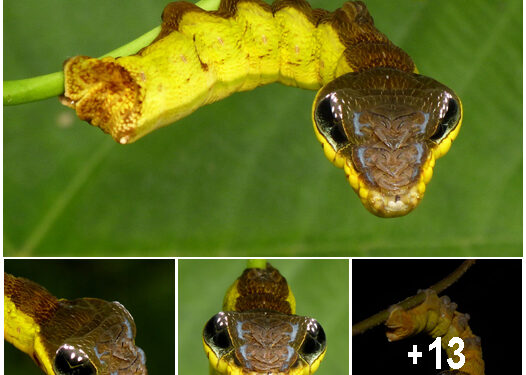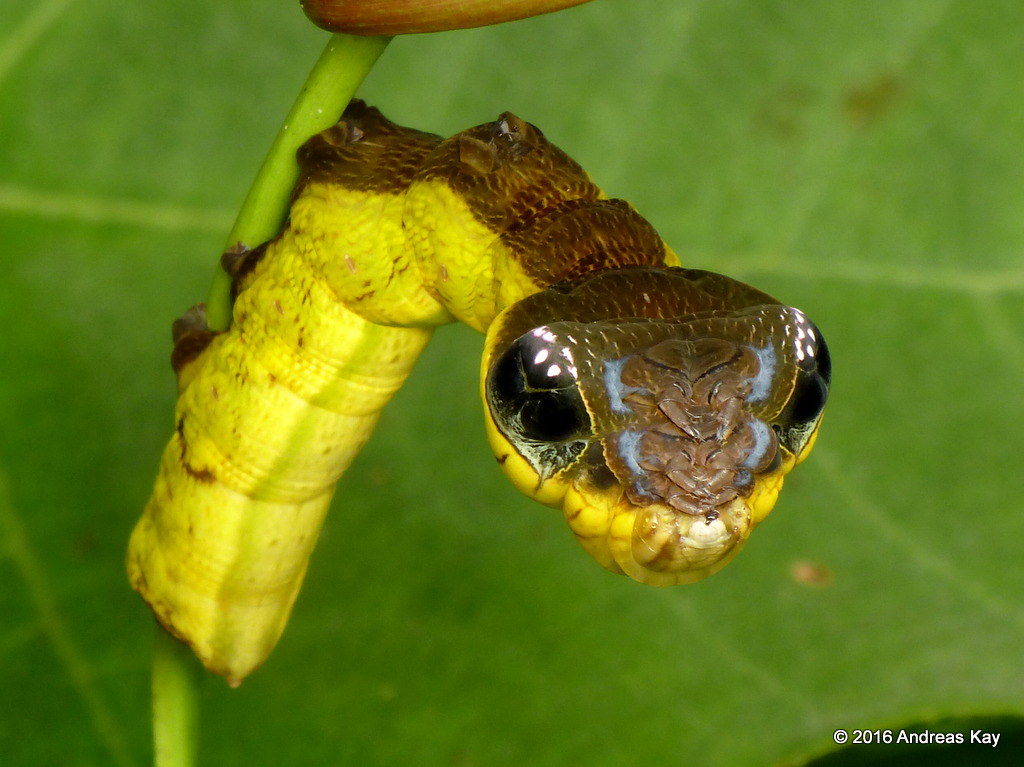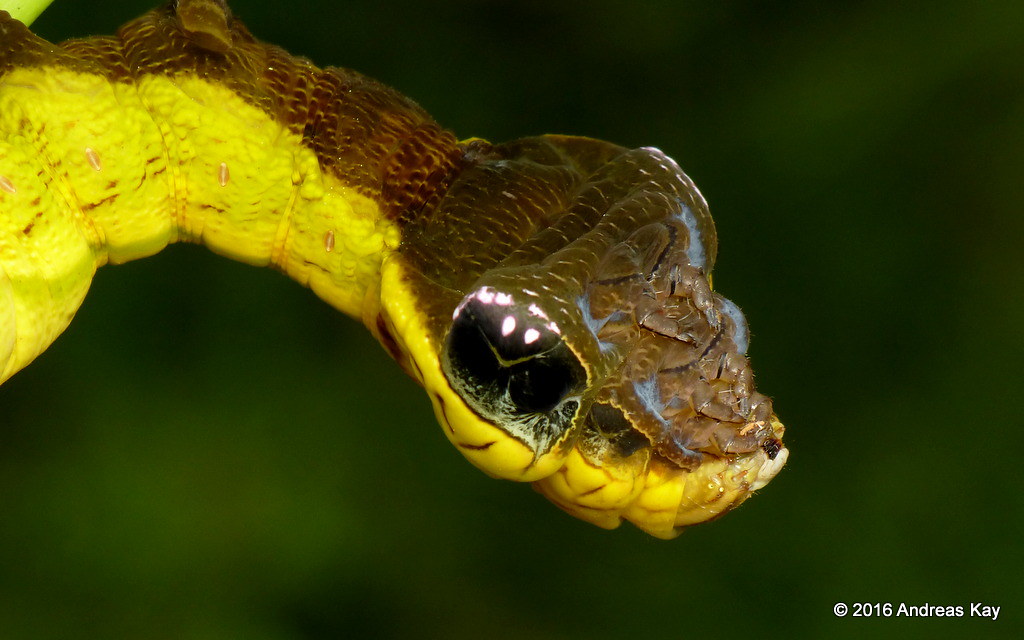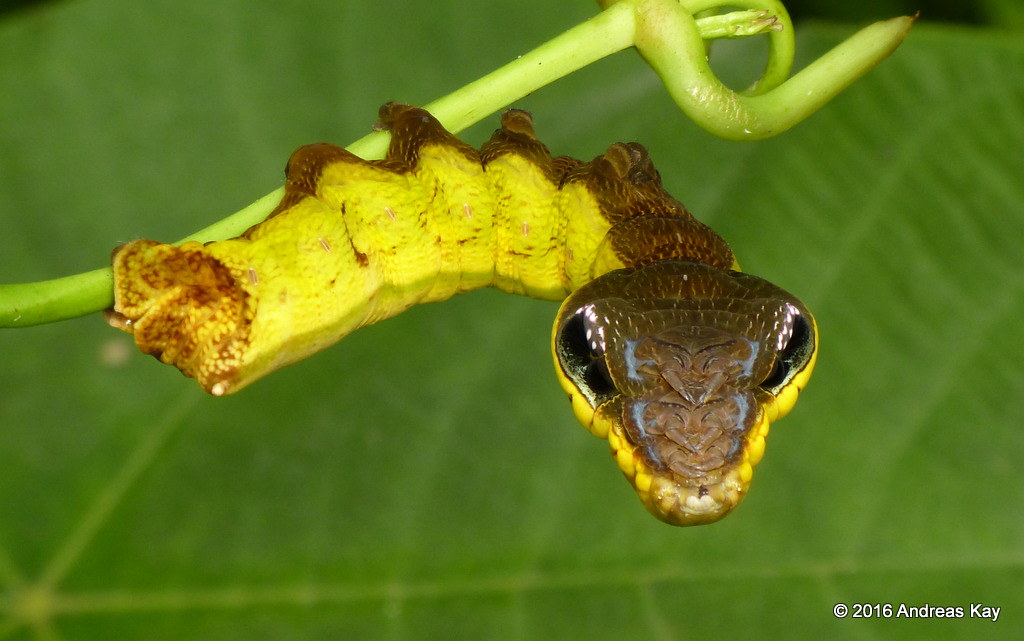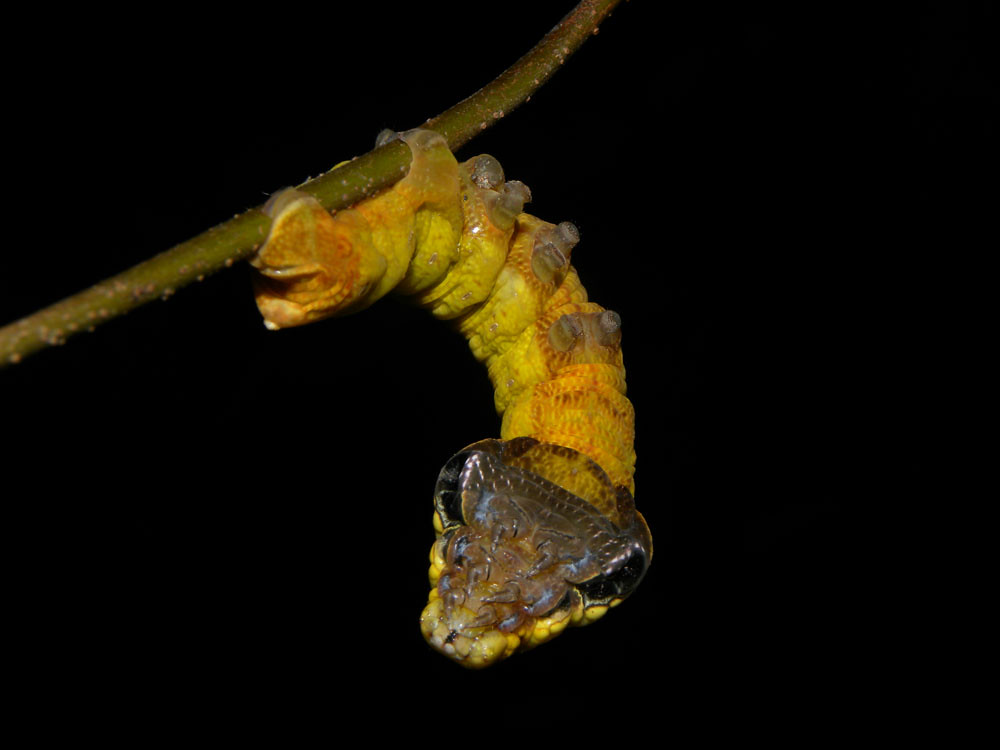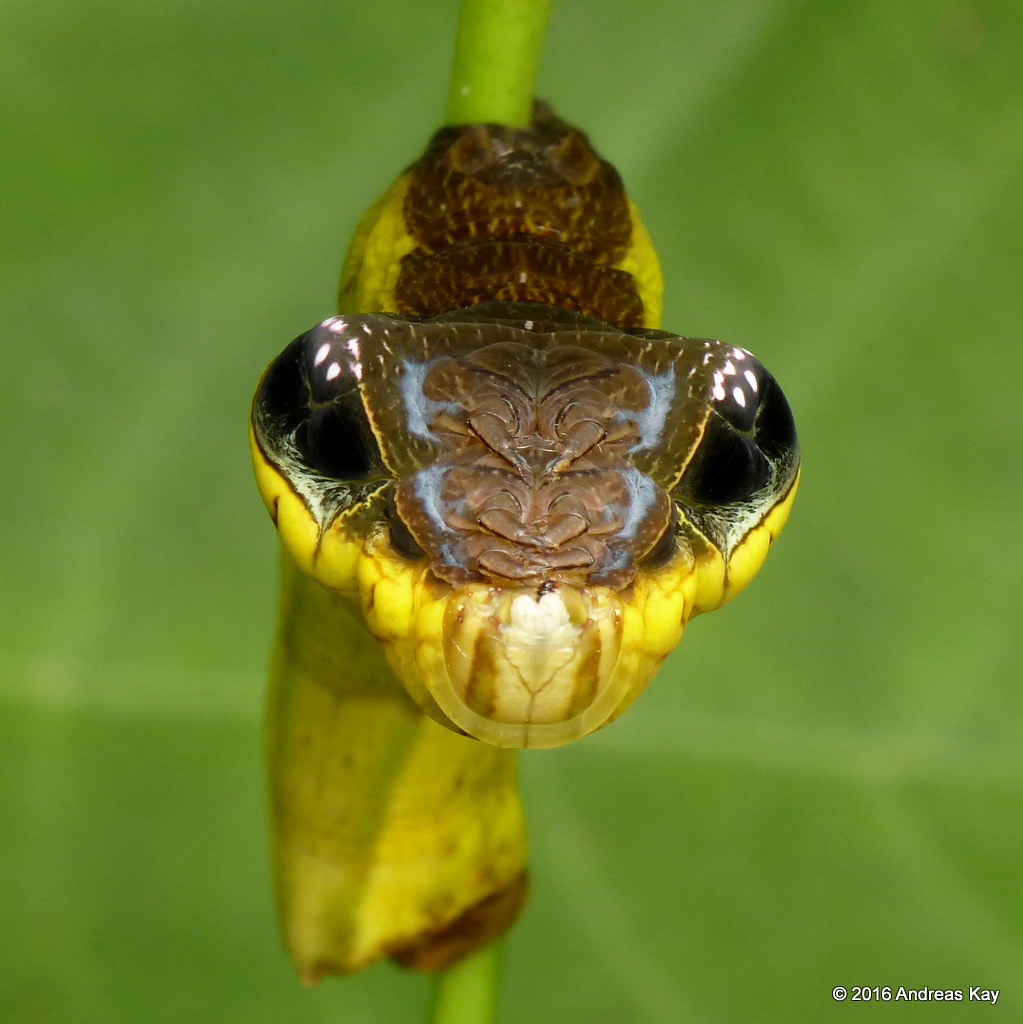To fend off potential predators, the larva of this moth undergoes a truly fascinating transformation. It initiates its defensive maneuver by gracefully flinging itself backward, revealing concealed shades of yellow, white, and black on its underbelly. The caterpillar then inhales air through tiny side holes known as spiracles, directing it to the front of its body. When fully inflated, the caterpillar adopts the guise of a venomous snake, complete with a diamond-shaped “face” and large, intimidating black eyes.
It’s worth noting that while deflection, a tactic used to divert a predator’s attention away from the vital parts, isn’t uncommon in the animal kingdom, the snake mimic caterpillar’s false face is located at the same end as its real head. This means there’s no room for error, and the caterpillar’s survival hinges on its ability to intimidate or startle a potential attacker. For any predator, a confrontation with a seemingly venomous snake is an unappealing prospect.
This remarkable natural mimicry underscores the incredible lengths to which creatures will go to evade danger and survive in the wild. While many animals employ disguises, the snake mimic caterpillar stands out as a master of mimicry, donning the finest snake costume that nature has to offer.
Photo: Reinaldo Aguilar
